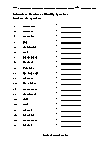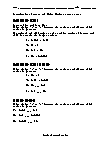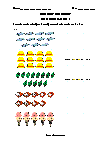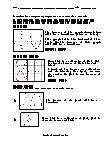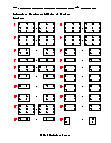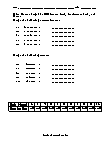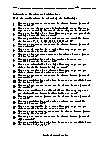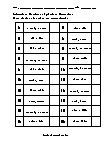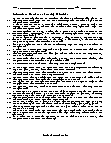Math Worksheets Center
Your very own huge collection of printable K-12 math worksheet and lesson!
Complete explanations and answer keys! We give instructions on all core K-12 math skills. Best of all it's free! See all our worksheet categories below:
-
Addition
Addition is one of the fundamental operations performed in everyday life.
See addition worksheets -
Algebra
Algebra is where letters, numbers, and symbols are given a purpose in math operations.
See algebra worksheets -
Basic Operations
These worksheets and lessons focus on the four fundamental math operations.
See basic operations worksheets -
Comparisons
We not only compare and order integers, but we also compare data on a graph.
See comparison worksheets -
Complex Numbers
These are a combination of real and imaginary numbers. You will be able to spot both distinct parts.
See Complex Numbers -
Coordinate Graphing
We work on plotting sets of ordered pairs and making sense of their location.
View Coordinate Graphing -
Counting
When we have a set group, this is the way we learn to order the set and create a system.
View Counting -
Exponents
This concept tells us how many times a value needs to be multiplied by itself based on the power it is raised to.
View Exponents -
Factoring / Multiples
We look a two very different by directly related concepts in this section.
View Factoring / Multiples -
Fractions
We learn how to represent a part of a whole value. We understand how to break it into smaller portions.
View Fractions -
Geometry
One of the oldest forms of mathematics that explores size, shape, and the position of things.
View Geometry -
Graphing and Data
These awesome graphical displays allow us to bring our data to life and help us make good decisions.
View Graphing and Data -
Integers
This is one of those terms that are loosely thrown around, but often students do not fully understand it.
View Integers -
Irrational Numbers
These are values that you cannot write as a simple fraction. They are a bit crazy!
View Irrational Numbers -
Linear Equations
This is where geometry and algebra start to overlap a bit. We work with equations of the line.
View Linear Equations -
Logarithms
These seem very complex, but it simply helps you determine how many times you must multiply a number to get a set value.
View Logarithms -
Measurement
We use a variety of tools and techniques to learn to quantify something so that we can understand it better.
View Measurement -
Metric System
Introduced to the world in the late seventeenth century, this system of measurement is used by most of the world today.
View Metric System -
Money
We start by counting it and then we see how they can be applied to complex systems.
View Money -
Multiplication
It is time to really see what we can do with the form of addition on Mountain Dew.
View Multiplication -
Order of Operations
We learn which math operation you should use at what time when you are confronted with multiple operations to process.
View Order of Operations -
Patterns, Sequences
Students learn how to breakdown a system and determine which rules are followed to produce it.
View Patterns, Sequences -
Percentages
The is a ratio of a whole or full value expressed as a fraction of 100.
View Percentages -
Place Value
We begin to look at the specific value of digits that are found within values.
View Place Value -
Polynomials
We explore these many termed expressions. Students learn how to manipulate the constants, variables, and exponents that they are composed of.
View Polynomials -
Pre-Calculus
This is a later High School subject that is making sure you are ready for advanced college math.
View Pre-Calculus -
Probability
What is the likelihood that something will take place under the given conditions?
View Probability -
Quadratic Equations
When graphed, they make nice curves. We break down the anatomy of these types of equations and learn to manipulate them.
View Quadratic Equations -
Ratios & Proportions
These are often thought as one in the same, but they are not.
View Ratios & Proportions -
Scientific Notation
A very helpful way to name values that are either very large or very small.
View Scientific Notation -
Shapes
We look at the simple geometric uses of shapes and help give them more meaning to you.
View Shapes -
Statistics
This is a varied series of ways we approach data to help us make better and more informed decisions.
View Statistics -
Subtraction
We learn to find the difference between many different types of values.
View Subtraction -
Time Math
We learn how to make sense of all types of things that are related to time.
View Time Math -
Word Problems
Students will explore problems that are presented as a story and relate to all different applications of math.
View Word Problems


